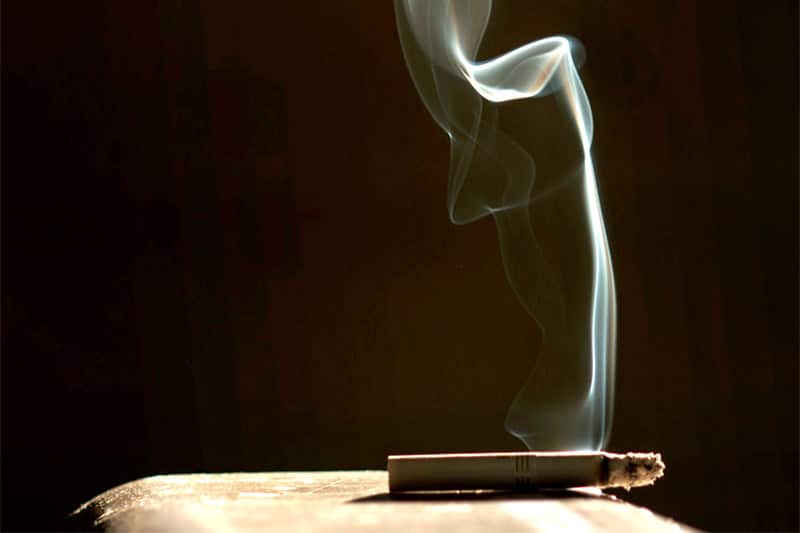
As most of you know, smoking is dangerous and a key cause of death everywhere in the world. It is actually is the number one cause of preventable death in the United States — ranking higher than obesity, substance abuse, infectious disease, firearms, and traffic accidents.[1] A study by BMC Medicine asserts that in Australia, up to two-thirds of deaths in smokers are due to their smoking.[2] Every 6 seconds, one person dies from a tobacco-related disease — that’s 10 people every minute.[3]
Unfortunately, smoking is addictive — the nicotine inhaled via the cigarette smoke goes to the brain and leads to the release of the chemical dopamine in the brain, creating a sense of relaxation and calm. When the brain changes to adjust to the nicotine intake, the smoker experiences withdrawal symptoms when there’s insufficient amounts of it. Addiction to the nicotine in tobacco can happen very quickly, after only smoking for a short time or smoking a few cigarettes.[4]
Because of the highly addictive nature of cigarettes, it’s difficult for smokers to quit. Many have tried time and again over the years, only to fail repeatedly.
For many smokers, the more plausible goal is to stop smoking by the day, with some by the hour. The good news is that the positive effects of not smoking starts as soon as within 20 minutes of putting down the cigarette. Here is a timeline of some of the immediate and long-term changes when you put down the cigarette:
![What Happens to Your Body If You Stop Smoking [Infographic]](https://personalexcellence.co/files/infographic-stop-smoking-800x592.gif)
(Click image for larger version (Infographic by Wade Meredith))
My husband used to be a heavy smoker in his 20s, smoking 12-15 cigarettes a day for six years. He quit smoking two years ago (in 2013), and some of the benefits he has experienced are (starting from most immediate):
- Food tasting better (his senses were previously numbed from smoking);
- Air smelling better, cleaner, and crisper;
- No smoker’s breath;
- Throat no longer feeling dry and sore;
- Saving $120 USD/month (previously spent on cigarettes) which can then be put to better use;
- Without any training, shaving one full minute off his 2.4 km fitness run in the army, and getting a silver award for the fitness test for the first time in 10 years;
- More hair growth;
- Becoming more productive and sociable as he no longer needs to pause what he’s doing to get his cigarette fix;
- Improved self-control and focus as he has learned to overcome chemical/psychological urges of smoking.
While the quitting process wasn’t easy — he experienced acute coughing and wheezing for three weeks as his lungs purged out the toxins built up from the years of smoking — the results have made it worthwhile. Of course, knowing that he is now healthier and has dramatically improved his chances of living to an older age is probably the biggest reward of it all. We can’t prevent death nor know when it’s gonna hit us, but the least we can do is manage the factors within our control and leave the rest to the universe.
Whether you’ve been smoking for a few months, a few years or many years, know that it is in your power to quit. Here are some resources to help you:
- smokefree.gov — A website that provides free information and assistance to help you quit smoking and stay tobacco-free.
- Tips From Former Smokers — This CDC campaign Web site lets you view the ads, learn more about the people featured and their health conditions, and access quit-smoking resources.
- Harms of Smoking and Benefits of Quitting — A fact sheet from the National Cancer Institute that summarizes the harmful effects of smoking and short- and long-term benefits of quitting.
- The Easy Way To Stop Smoking (by Allen Carr) — Allen Carr, the writer, used to smoke 100 cigarettes a day until he quit and wrote this book to help others quit smoking. It has since become one of the biggest selling self-help titles with 13 million copies sold worldwide and is the #1 bestseller in Smoking Recovery.
- What Happens When You Quit Smoking — Healthline has another quit smoking timeline which goes into further details.
In the process of quitting smoking, it is important to (1) have a strong WHY to quit, (2) understand your triggers for smoking and decouple them from the negative habit itself, and (3) have a clear plan to stay off. I dive into habit triggers here: How a Relapse Begins: The Key To Removing Bad Habits.
Also, come up with some replacement activities to replace smoking. For example, perhaps you took up smoking when you were in college, as a way to relieve stress. So smoking becomes your go-to activity whenever you feel stressed or uncomfortable. If so, come up with some simple things to do to relieve stress, such as watching your favorite show, going for a walk, lying on the bed, or listening to some rock music.
Don’t overwhelm yourself in the process of trying to quit; rather, work on it in manageable chunks. Work on not smoking for the next 24 hours, and by the end of the 24 hours, work on not smoking for the next 24 hours. Work on it on a day-to-day basis, and soon you may find your desire to not smoke outweighs any interest to smoke.
Whatever it is, know that you’re not alone in this journey. There are many people out there working on quitting smoking, and everyone is working through it one step at a time. Focus on loving yourself, fulfilling your inner-most needs, and honoring yourself. Get a support group; join online communities (such as Facebook groups) on quitting smoking. You have it in you; believe in yourself and never give up. In time to come, you’ll find the days of smoking long behind you.
(Image: Cigarette smoke)







 Thanks for reading. If you like my free articles, join my private email list and get my latest updates and articles sent right to your inbox.
Thanks for reading. If you like my free articles, join my private email list and get my latest updates and articles sent right to your inbox.